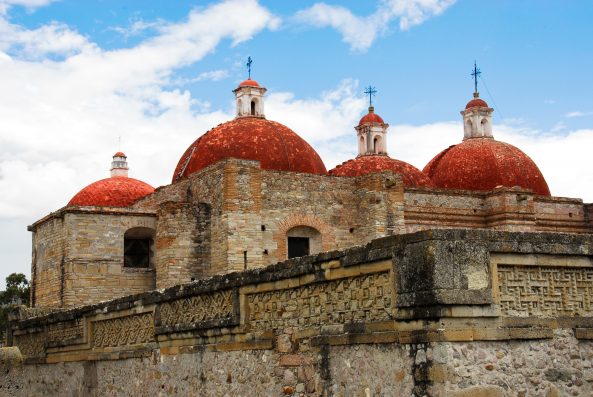This Ancient Entrance To The Underworld Was Found Underneath A Church In Mexico

Beneath a 16th-century church in southern Mexico, a vast “underground labyrinth” of passageways was found.
According to legend, the ancient Zapotecs built an elaborate network of tunnels around a deep cavity. They believed it was an entrance to the underworld.
Later, Spanish missionaries sealed off the entrance, which was said to be underneath the Church of San Pablo, a Catholic church constructed in the 16th century.
In 2023, a team of researchers discovered the tunnels beneath the ruins of an ancient city called Mitla, located in what is now Oaxaca.
Mitla was a religious center for the Zapotecs, who emerged around the 6th century B.C.E. in Mexico’s Oaxaca Valley. The city also served as a burial ground for kings and high priests.
Historical accounts also support stories of the tunnels. In 1674, a Dominican writer named Francisco Burgoa described an earthen cavity at Mitla.
A group of Spanish missionaries decided to explore it, but when they entered the intricate web of caverns, they were appalled by the “bad smell, the dampness of the floor, and a cold wind which extinguished the lights.” So, they closed up all entrances to the tunnels.
“After a short distance, fearing being afflicted or encountering poisonous creatures (of which they saw some), they decided to retreat.
They commanded to seal that infernal doorway completely, yet the upper rooms, with their courtyard and chambers, still remain,” Burgoa wrote, per a translation.

Noradoa – stock.adobe.com – illustrative purposes only – pictured above is the Church of San Pablo
The Zapotecs called the tunnel network Lyobaa, which translates to “place of rest.” The team that had been working to uncover Mitla has adopted the name Project Lyobaa.
The project was a collaboration between Mexico’s National Institute of History and Anthropology, the National Autonomous University of Mexico, and the ARX Project.
The search for the underworld in Mitla began in the 19th century, but efforts had not proven to be fruitful until recent years.
The researchers used three geophysical scanning techniques, including ground penetrating radar, seismic noise topography, and electrical resistivity topography, to create a three-dimensional model of Mitla’s underground passageways without disturbing the archaeological site.
The scans showed a “large void” beneath the church’s main altar. There were also two more passageways situated between about 16 and 26 feet below the ground.
“The newly discovered chambers and tunnels directly relate to the ancient Zapotec beliefs and concepts of the underworld and confirm the veracity of the colonial accounts that speak of the elaborate rituals and ceremonies conducted at Mitla in subterranean chambers associated with the cult of the dead and the ancestors,” said Marco Vigato, founder of the ARX project.
The findings will help experts better understand the ancient city and its development, as well as provide information on how stable the ground is in the area and what needs to be done to manage it.
Sign up for Chip Chick’s newsletter and get stories like this delivered to your inbox.
More About:News





